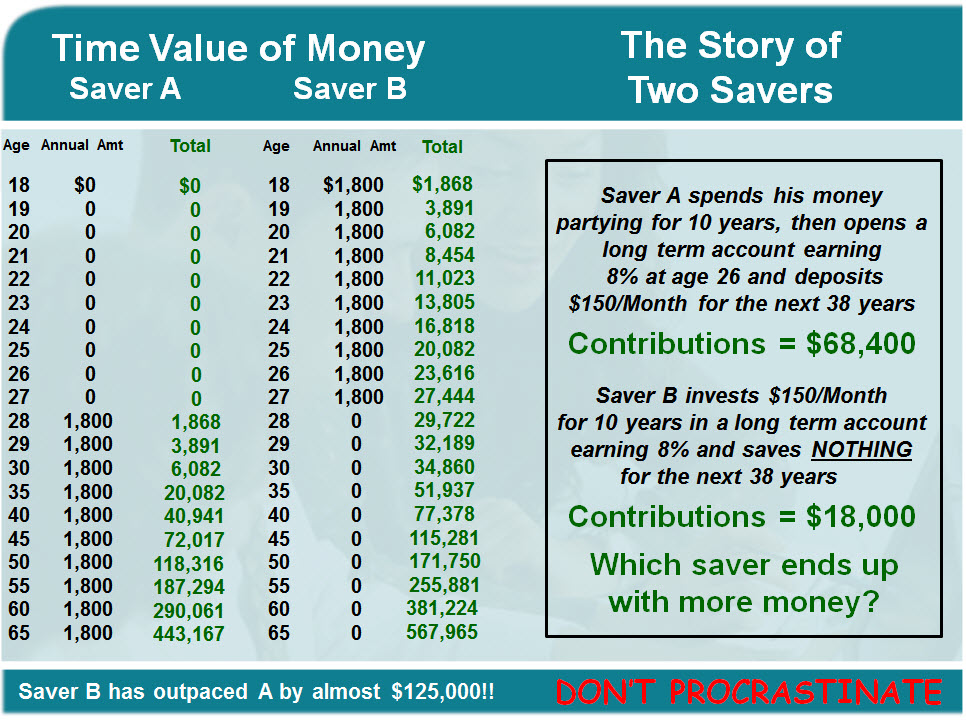Time Value of Money

The Story of Two Savers
The key to the chart above is that Saver B did not wait to start his/her savings program. Even though the rate of return is historical, the principle remains the same. Because Saver B had an 10 year head start, Saver A was never able to catch up, even though Saver B stopping investing after age 27. That is one way of looking at the Rule of 72 and understanding the power of compounding and the importance of following a regular plan of saving and investing. Here is another example with the effects of different rates of return on a fixed sum of money:
The Rule of 72

How much do you need to save?

Click on the calculator above for the Rule of 72 Classroom Calculator
or use the general calculator below:

 Car Buying
Car Buying College Planning
College Planning Computer Safety
Computer Safety Discount Health Plans
Discount Health Plans Final Expense Insurance
Final Expense Insurance Consumer Tips
Consumer Tips Home Buying
Home Buying Home Insurance
Home Insurance Identity Theft
Identity Theft Prescriptions
Prescriptions Shopping
Shopping Travel
Travel Getting Started
Getting Started Debt Roll-Up
Debt Roll-Up Credit Reports
Credit Reports Credit Scores
Credit Scores Credit Repair
Credit Repair Growing Wealth
Growing Wealth Time Value of Money
Time Value of Money Controlling Risk
Controlling Risk Tax Planning
Tax Planning A Balanced Plan
A Balanced Plan Enlisted Pay
Enlisted Pay Officer Pay
Officer Pay Finding a Job
Finding a Job Relief Act
Relief Act Thrift Savings Plan
Thrift Savings Plan VA Education
VA Education VA Home Loans
VA Home Loans VA Health Care
VA Health Care VA Pension Benefits
VA Pension Benefits VGLI
VGLI
